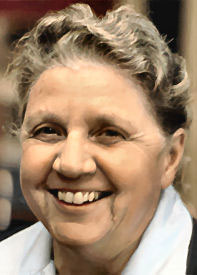
The Star Wars series returns to the silver screens just a couple of weeks from now with Star Wars, Episode VII: The Force Awakens, and with it a nearly 90-year-old branch of science fiction that originated in the pulp magazines: the space opera.
Merriam-Webster defines space opera as “a futuristic melodramatic fantasy involving space travelers and extraterrestrial beings.” Early, or proto, science fiction and fantasy naturally included beings on worlds other than our Earth. In the 1600s, Cyrano de Bergerac wrote about rocketing to another world — our Moon in this case — in The Other World: Comical History of the States and Empires of the Moon. There were similar stories over the next 250-odd years, with Earthlings exploring inhabited worlds among the stars.
In 1912, Edgar Rice Burroughs took readers of All-Story to Mars, called Barsoom by its many, varied inhabitants, in “Under the Moons of Mars.” It was one of many planetary romances (using romance in the literary sense to mean a heroic adventure in a far away location) appearing in the early pulp magazines.
Mixing science and technology with planetary romance, E.E. “Doc” Smith cast the mold of the space opera with “The Skylark of Space,” which was eventually serialized in Amazing Stories (August through October 1928). Smith’s tale included all of the elements you’d expect in a space opera: heroes, villains, a stolen technology, a kidnapping, a chase across the galaxy, a war between empires on a distant planet.
Before long, the space opera was a staple of the science fiction pulps. Smith’s Skylark series continued with two more serials in the pulps. Other pulp fictioneers contributing to the space opera field included Isaac Asimov, Jack Williamson, A.E. Van Vogt, C.L. Moore, Edmond Hamilton, and Leigh Brackett.
And though the pulp era ended in the 1950s, space opera lived on, though maybe not as an major part of sf. That is, until 1977 and Star Wars (later retitled Star Wars, Episode IV: A New Hope).
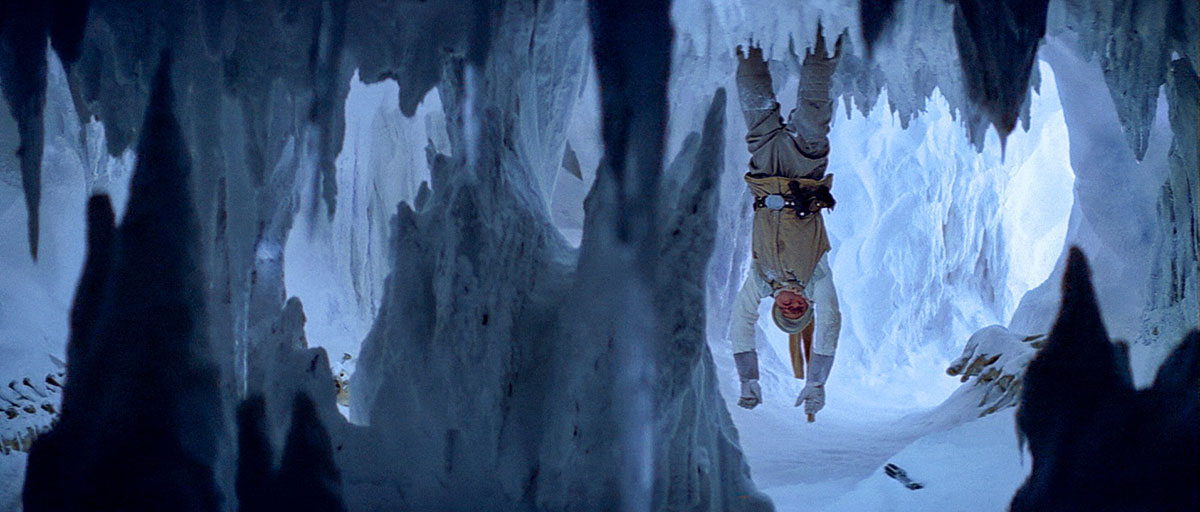
With the unanticipated success of Star Wars, director George Lucas was under pressure to get a sequel underway. Looking for help, Lucas turned to a screenwriter imminently qualified for the job: Leigh Brackett — the same Leigh Brackett from the earlier pulps.
In the 1976 essay, “Story-teller of Many Worlds,” Edmond Hamilton says of his wife:
(Leigh Brackett) was once, a good many years ago, a sunburned, muscular, small girl roaming the California each in front of her grandfather’s old house and playing at being a pirate. From what her family told me, I believe she was a hardy, adventurous little tomboy. But then something happened that wafted her away to realms more fascinating than the shores of Santa Monica Bay and imagined piracy.
The something was a chance gift to her of a copy of Edgar Rice Burroughs’ The Gods of Mars. In that classic of wild adventure on a haunted, dying Mars, Leigh found a basis on which to build new and vaster dreams. The book was an inspiration on which, in later years, she slowly built up her own colorful Mars, the planet of the wicked Low-Canal cities and desert tribesmen and lost secrets, the world of an ancient history full of magic and mystery.
Brackett — the 100th anniversary of her birth is Monday, Dec. 7, by the way — began her writing career with the publication of “Martian Quest” in Astounding Science Fiction (February 1940). Soon after, she also was regularly appearing in Super Science Stories, Thrilling Wonder Stories, and more importantly Planet Stories.
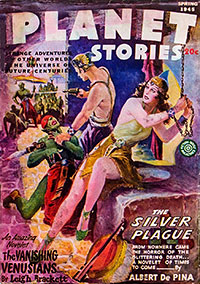 Planet Stories “provided a steady market for the kind of stories I liked best to write. In short, I owe them much. … Planet, unashamedly, published ‘space opera,’ ” Brackett wrote in the introduction to her anthology, The Best of Planet Stories #1.
Planet Stories “provided a steady market for the kind of stories I liked best to write. In short, I owe them much. … Planet, unashamedly, published ‘space opera,’ ” Brackett wrote in the introduction to her anthology, The Best of Planet Stories #1.
Along the way she earned the moniker of “Queen of Space Opera.” But her writing wasn’t limited to space opera, or sf for that matter.
Her first published novel, No Good From a Corpse (1944), was a hardboiled tale featuring detective Ed Clive. In Hard-Boiled: An Anthology of American Crime Stories, Bill Pronzini writes that No Good From a Corpse is “so Chandleresque in style and approach it might have been written by (Raymond) Chandler himself.”
(In addition to the sf pulps, Brackett’s pulp market grew to include Flynn’s Detective Fiction, Mammoth Detective, and Thrilling Detective.)
No Good From a Corpse opened a new door for Brackett. The novel — in particular its dialog — so impressed film director Howard Hawks that he contracted Brackett to collaborate with William Faulkner (and Jules Furthman) on the screenplay of Chandler’s The Big Sleep. The movie was released in 1946, and in 1997 was added to the Library of Congress’ National Film Registry.
From there, she went on to write 17 film or TV screenplays, including four more for Hawks (the John Wayne features Rio Bravo, Hatari!, El Dorado, and Rio Lobo) and another Chandler adaptation, The Long Goodbye, for director Robert Altman.
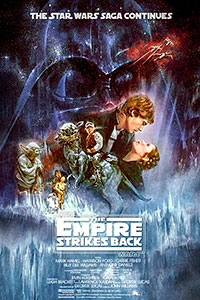 In 1977 while Star Wars was still dominating at the box office, Lucas sought out Brackett, Laura Berger at Women and Hollywood says, based on her pulp background, not knowing about her screenwriting credentials. “His interest in bringing her into the Star Wars universe was based solely on her work in pulp sci-fi,” Berger writes.
In 1977 while Star Wars was still dominating at the box office, Lucas sought out Brackett, Laura Berger at Women and Hollywood says, based on her pulp background, not knowing about her screenwriting credentials. “His interest in bringing her into the Star Wars universe was based solely on her work in pulp sci-fi,” Berger writes.
In December of that year, Lucas wrote out by hand a 19-page story treatment for the sequel. Brackett worked from that treatment, fleshing it out into a 128-page script. In both the treatment and the draft script you can see a framework of locations, characters, and ideas that ended up in what is arguably the best of the Star Wars movies.
She turned in the first draft for what would become Star Wars, Episode V: The Empire Strikes Back in February 1978. Less than a month later on March 18, Brackett was dead from lung cancer at age 62. Lucas tapped Lawrence Kasdan, who also wrote Raiders of the Lost Ark, to rewrite the script. The final, fifth version is what appeared on screen in 1980.
“Space opera” was coined by Wilson “Bob” Tucker in 1941 fanzine article as a mocking term for “the hacky, grinding, stinking, outworn spaceship yarn,” derived from “horse opera” used to describe hackneyed Westerns. But it has since shed that negative connotation. Much of that credit goes to the popularity of the Star Wars series, which included an often overlooked contribution by pulp magazines’ Queen of Space Opera, Leigh Brackett.

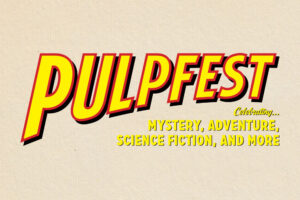


An excellent synopsis of Leigh Brackett’s story, Mr. Lampkin. This is the best of the hoped-for memorials for her in the days to come. Again, well done.
Thank you, Stephen. I appreciate that.
I should have included a link to Haffner Press, which has reprinted several of Brackett’s works, including an upcoming Leigh Brackett Centennial with an unpublished story. (There’s also an extensive library of Edmond Hamilton books, too.)
Do you have more info on the Skylark series? Sounds like something I would love to read!
It’s certainly worth reading the first novel, “The Skylark of Space.” It was serialized in Amazing Stories from August to October 1928. (In fact, it’s the “Skylark” story that’s illustrated on the cover of August 1928, and frequently mistaken for the Buck Rogers story in that issue, since it looks like the Buck Rogers from the comic strip).
It was written between 1915 and 1921, but not published for another seven years. My only complaint with it is that it’s written in an old-fashioned style. If you overlook that, it’s a pretty good story. Also, during the flight across the galaxy, the characters meet a “disembodied intelligence,” which may be the first appearance of that form of creature in science fiction.
“The Skylark of Space” is available at Project Gutenberg.
I’ve read it and the sequel, “Skylark Three” (that’s the name of the spaceship, not the sequence of the series), but haven’t continued beyond that. “Skylark Three” is also at Gutenberg, and was originally serialized in Amazing in 1930.
The third story, “Skylark of Valeron,” was published in Astounding in 1934. The final story, “Skylark DuQuesne,” was published as a book in 1965, well after the pulp era.
This is just my opinion but I think Doc Smith was hopeless as a writer of fiction. He had some good ideas but his characters behave in a childish manner and the dialog is silly and childish also. The plots are ridiculous and I think the novels are so dated and poorly written that they are just about unreadable today.
In early SF, he has some significance but he was not a good writer at all.
I met Leigh Brackett and Edmond Hamilton at an early Pulpcon and had a long conversation with her about her hard boiled fiction in the detective pulps. I remember she was surprised that someone was talking to her about detective and not SF fiction.
I noticed that the official list of Pulpcon’s Guest of Honors do not list the early guests from 1972-1975. This leads us to think that there were no guests at the first 4 Pulpcons. But there were guests. I know because I remember them.
At the first Pulpcon in 1972, Graves Gladney, the Shadow artist was the guest. At the second or third show in 1973 or 1974, Hal Bonnett of Bonnett’s bookstore was the guest and gave an interesting speech about his long ago writing career. He had written soft core porn paperbacks and also appeared in BLACK MASK.
Leigh Brackett and Hamilton appeared in the mid or late 1970’s but I see that their names are not listed. But they were there as Pulpcon guests.
It was probably a treat for her that someone asked about something other than sf fiction. I’m sure she was equally proud of her hard-boiled writing as her sf.
I wish I had known about the Pulpcons in the ’70s and ’80s, when many of the original pulpsters were still living.
If the list of Pulpcon guests of honor you’re referring to is the one on ThePulp.Net’s PulpWiki, that came from the list that was on the Pulpcon website. It would be great to have a list of guests who attended each con, but maybe weren’t official “guests of honor.”
I think the key word here is indeed “unofficial” guests of honor. I guess that’s why we don’t see Gladney, Hamilton, and Brackett listed. In the early years, the first few Pulpcons were lucky to have appeared at all and I’m sure there was no money to pay for the official GOH expenses. Later on Rusty Hevelin had some money to reimburse guests but certainly not at the early conventions. Ed Kessell, who organized the first Pulpcon, lost over $500 and would not have paid for Graves Gladney’s expenses, etc. Gladney lived in St. Louis and was invited to show up at the show.
By the way, Kessell was reimbursed by Rusty at a later Pulpcon in the 1980’s.
“In short, I own them much” — owe them much, right?
I love Brackett’s stuff, especially the Stark tales. She was one of the best sf/fantasy writers who ever lived.
My fingers typed one thing when I meant to type another, and spellcheck didn’t catch the swapped words. Yes, “I owe them much” is correct — and has been corrected. Thanks, Lohr!
William, thank you very much for your piece on the writing career of Leigh Brackett. Good job! Maybe I should hire you to write for the PulpFest website.